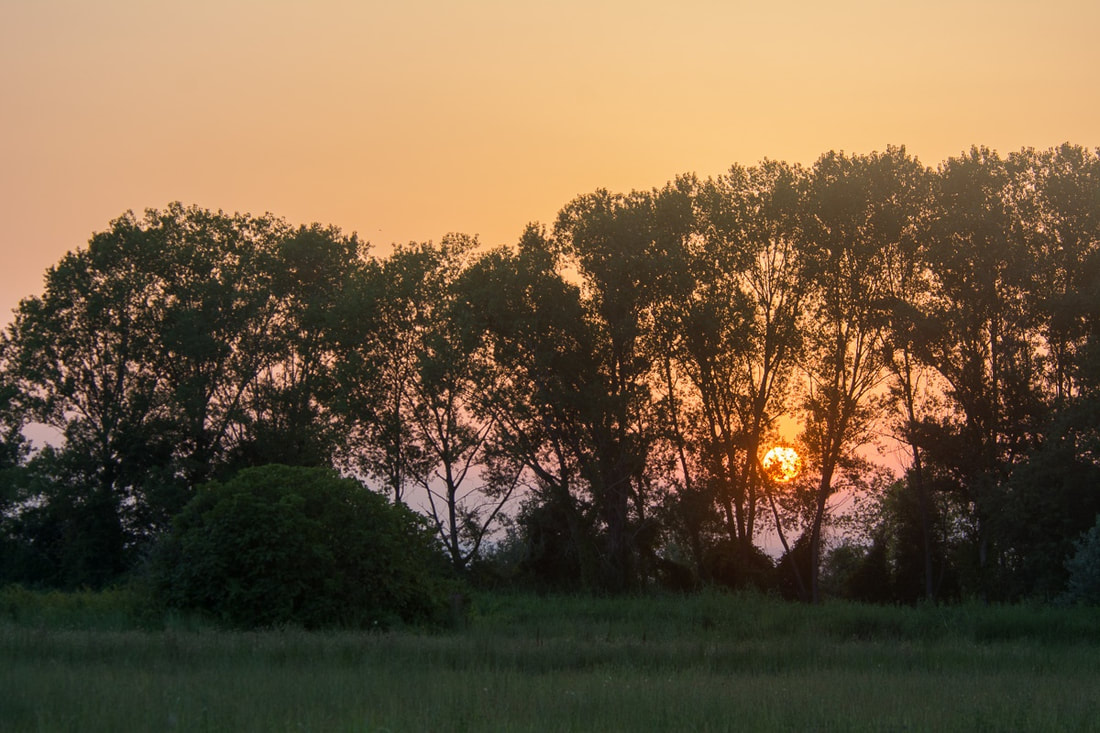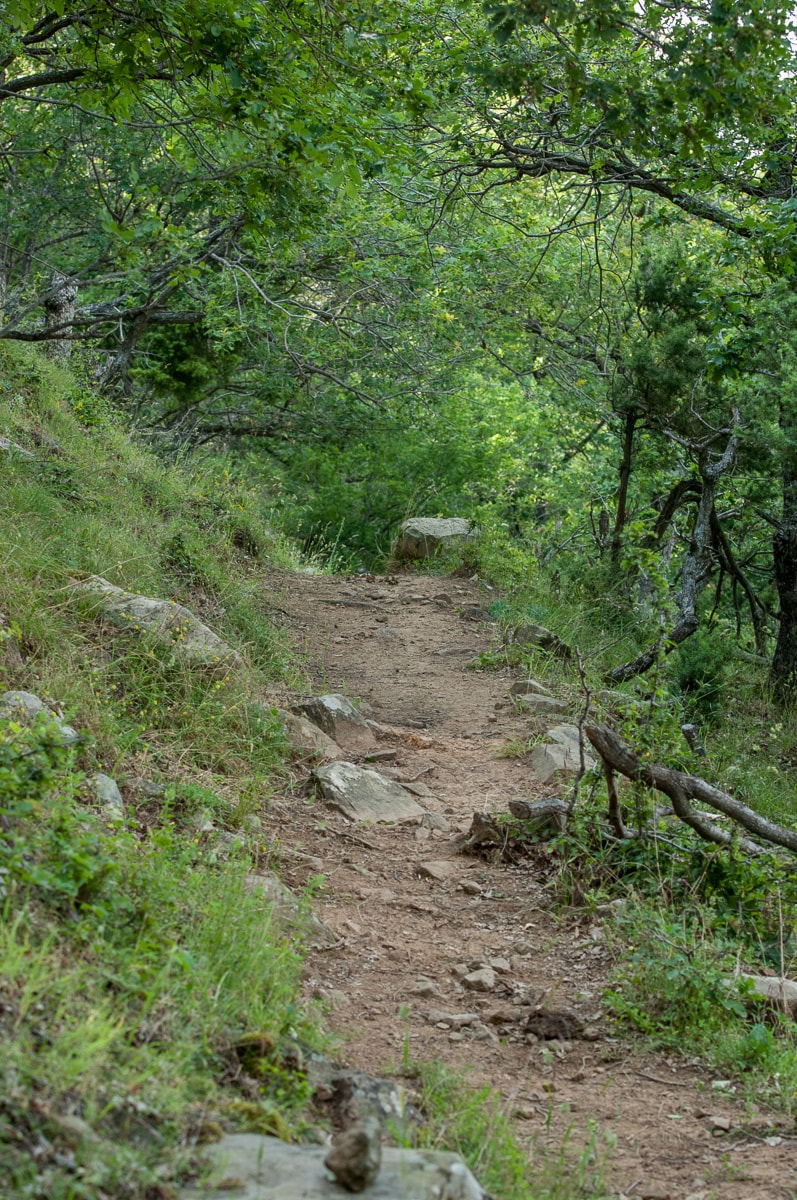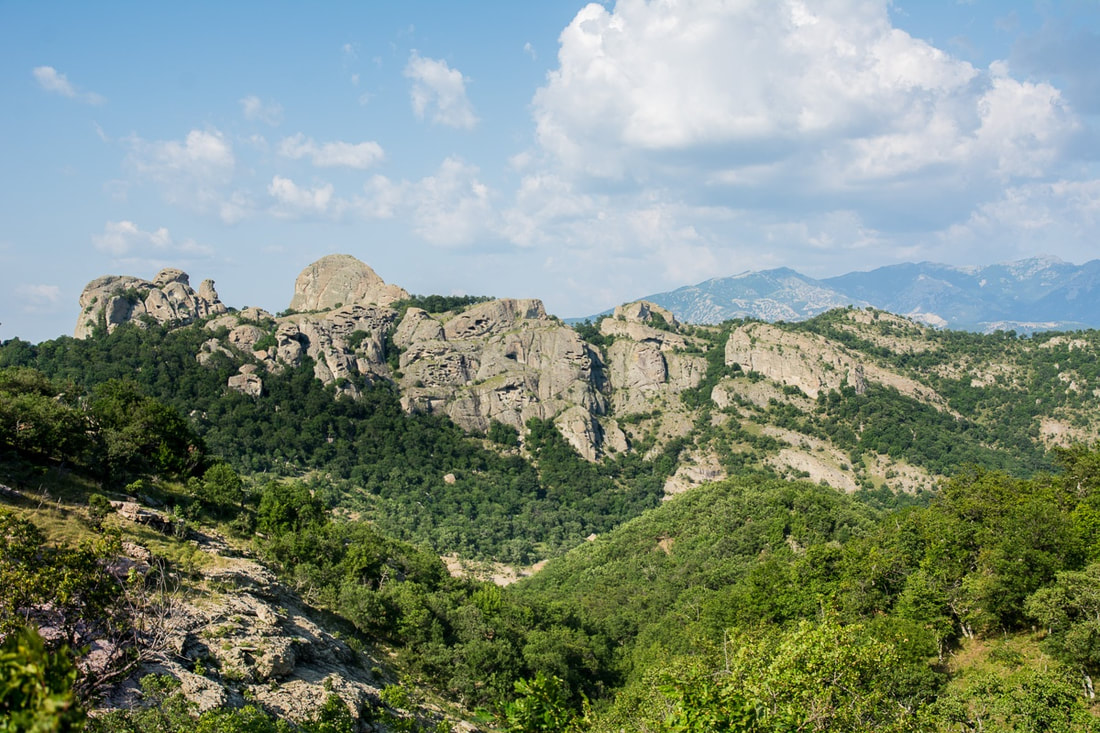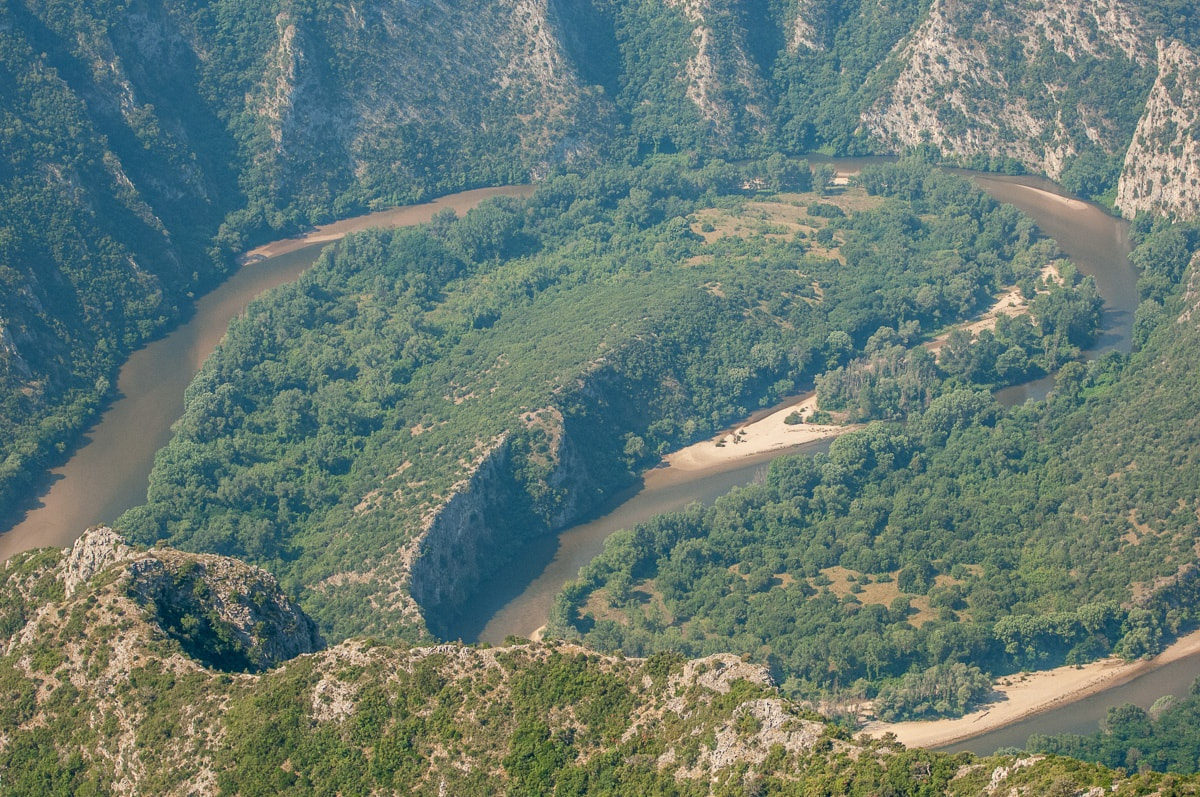It’s in the aromas from the chimneys and from Xanthi’s garlic plantations, the smell of the sea and the Rhodopi Mountains’ cool breeze. It’s also the mosaic of cultures, races and religions that come together here, creating a uniquely historic combination of people. It’s the colourful Carnival and festive open-air market. There’s a special ambience here and you can’t quite put your finger on it. But you’ll feel it as soon as you arrive. Welcome to Xanthi.
What to do in Xanthi
The stately Old Town of Xanthi
Xanthi’s Old Town is glamorous and elegant. In the cobblestone streets and grand mansions of the wealthy tobacco merchants, you’ll find vestiges of a glorious era. Their stately multi-coloured homes have painted walls, wooden windows and blossom-filled gardens. Inside they’re decorated with tasteful, handmade furniture, stained glass windows and ornately carved doors. Worth a visit are the Town Hall, built in 1830, the Municipal Gallery on Orpheus Street and the Folklore Museum of Xanthi
Lake Vistonida and Porto Lagos: Where land and water become one
Nature lovers will find their paradise here. From the source of the Nestos River until Abdera, and from there until Porto Lagos and Lake Vistonida, you’ll find a majestic blend of earth and water. The soil here in this corner of Greece is irrigated by the river’s fresh water. This then merges with the salty sea and between the reeds you’ll discover a refuge for rare birds, fish and other animals. Pure and peaceful, this scenery invites you into its serene embrace.
At Pomakohoria, a cluster of villages
‘Is this even Greece?’ you’ll wonder. At Pomakohoria – a cluster of interesting little villages – the unspoilt landscape has not been altered by surrounding influences, and nor have the people. Many locals, with their blond hair and blue eyes, see themselves as the descendents of the Agrianes, the army of elite warriors led by Alexander the Great. Today they live in the foothills of the Rhodopi Mountain range, hearts well and truly set on preserving their cultural identity.
A colourful carnival
Every year Xanthi hosts the most brilliant, beautiful and colourful carnival in northern Greece. All of the city’s cultural communities come together to celebrate and recreate old customs. Although the Carnival has evolved over the years, the combination of modern additions, tradition and folkore is what makes it so special.
Hidden gems of Xanthi
The serpentine Nestos River
The Nestos River cuts across the Rhodopi Mountains, trying to reach the sea, snaking in and out of the mountain range and creating the famous ‘Nestos Straits’. These meanderings result in unique geological formations and are a sight worth seeing by boat.
The birthplace of Democritus
Here you’ll find one of the most important archaeological sites in northern Greece. The first Greeks that settled here in the ancient city of Abdera were from the Ionian city of Teo. The Klazomenes, from Asia Minor, came later in 654 BC and Democritus was born here. Its marvellous small museum will delight you.
The Xanthi bazaar
With a long history, broken only by the centuries of Ottoman rule, the Xanthi bazaar is still a mainstay of residents of the city and an attraction for visitors from all around Greece and abroad. Famed for the diversity of merchandise on display, it is multicultural affair, full of colour, raucous sounds, rousing sights and tantalizing aromas.
What to do in Xanthi
The stately Old Town of Xanthi
Xanthi’s Old Town is glamorous and elegant. In the cobblestone streets and grand mansions of the wealthy tobacco merchants, you’ll find vestiges of a glorious era. Their stately multi-coloured homes have painted walls, wooden windows and blossom-filled gardens. Inside they’re decorated with tasteful, handmade furniture, stained glass windows and ornately carved doors. Worth a visit are the Town Hall, built in 1830, the Municipal Gallery on Orpheus Street and the Folklore Museum of Xanthi
Lake Vistonida and Porto Lagos: Where land and water become one
Nature lovers will find their paradise here. From the source of the Nestos River until Abdera, and from there until Porto Lagos and Lake Vistonida, you’ll find a majestic blend of earth and water. The soil here in this corner of Greece is irrigated by the river’s fresh water. This then merges with the salty sea and between the reeds you’ll discover a refuge for rare birds, fish and other animals. Pure and peaceful, this scenery invites you into its serene embrace.
At Pomakohoria, a cluster of villages
‘Is this even Greece?’ you’ll wonder. At Pomakohoria – a cluster of interesting little villages – the unspoilt landscape has not been altered by surrounding influences, and nor have the people. Many locals, with their blond hair and blue eyes, see themselves as the descendents of the Agrianes, the army of elite warriors led by Alexander the Great. Today they live in the foothills of the Rhodopi Mountain range, hearts well and truly set on preserving their cultural identity.
A colourful carnival
Every year Xanthi hosts the most brilliant, beautiful and colourful carnival in northern Greece. All of the city’s cultural communities come together to celebrate and recreate old customs. Although the Carnival has evolved over the years, the combination of modern additions, tradition and folkore is what makes it so special.
Hidden gems of Xanthi
The serpentine Nestos River
The Nestos River cuts across the Rhodopi Mountains, trying to reach the sea, snaking in and out of the mountain range and creating the famous ‘Nestos Straits’. These meanderings result in unique geological formations and are a sight worth seeing by boat.
The birthplace of Democritus
Here you’ll find one of the most important archaeological sites in northern Greece. The first Greeks that settled here in the ancient city of Abdera were from the Ionian city of Teo. The Klazomenes, from Asia Minor, came later in 654 BC and Democritus was born here. Its marvellous small museum will delight you.
The Xanthi bazaar
With a long history, broken only by the centuries of Ottoman rule, the Xanthi bazaar is still a mainstay of residents of the city and an attraction for visitors from all around Greece and abroad. Famed for the diversity of merchandise on display, it is multicultural affair, full of colour, raucous sounds, rousing sights and tantalizing aromas.
nestos deltaThe Nestos Delta occupies a large area in the southern part of the prefectures of Kavala and Xanthi. The debris that Nestos deposits on estuary and ocean currents prevailing in the region, formed small lagoons of Bassora, Eratino, Agiasma, Kokala, Keramotis and Monastiraki- all in the western part of the delta, total area of 16,000 acres (S. Kavala) . In the eastern part of the delta (Xanthi) dominate the extensive areas of the dunes and periodic wetlands. Nestos 4x4. The wealth ofwildlife is great- although in 1953 the unique in Europe riparian forest, the famous Great Forest (Koca Orman) was put in Delta of Nestos. Mammals such as wild pigs, wolves, jackals, otters, badgers, foxes, weasels and ferrets. Particularly rich is the area for the winged world: In the Nestos Delta 254 species of birds have been recorded . Among these there are rare and endangered species worldwide such as Dalmatian Pelican (Pelecanus crispus), the Ferruginous Duck (Aythya nyroga), the Red-(Branta ruficollis), the Spotted Eagle (Aguila clara), the Imperial Eagle (Aguila heliaga), and the kestrel (Falco naumanni). The region is a unique area of research, observation, and information on the operation of natural aquatic ecosystems, structures and principles governing its operation. Projects such as the creation and operation of information centers for the Riparian Forest of the river, creat pathways guiding the restoration of native vegetation, reflood certain parts except the riverbed, and the constant protection of the ecosystem, are just the beginning to a study effort, conservation and recovery of outstanding natural aquatic ecosystem. Forest of Chaidou
|
thracian meteoraThe European path passes through an area of incomparable natural beauty, the Trikorfo. The road reaches the bridge of Kompsatos River in Trikorfo. The European path passes through the bridge of Trikorfo. The initial part of the trail has a little slope and crosses the tranquil setting of a small plateau on the west bank of the Kompsatos River, which is known from the ancient times and is even mentioned by Herodotus. Then the path stretches up to the hill and ends at the uninhabitedAstraea village. The houses are stone built Astraea with traditional architecture style and slate roofs. The village lies at the foot of rocky ridges, like Meteora, the tops of which are nesting rare birds of prey. After the village, the trail enters a virgin beech forest with natural water sources, where lives a wild herd of horses. The access to the Thracian Meteora can be madevia the provincial road of Iasmos – Polyarnos - Euthumo. After Polyarno there are two paths with adequate signage leading to the Thracian Meteora. After Iasmos it is advisable to use only 4X4 vehicles. Aesthetic Forest of Strait of Nestos RiverIt is located at the borders of Kavala and Xanthi prefectures, south of the town of Stavroupoli, with area of 2,380 hectares. It is one of the most beautiful landscapes of Greece with great ecological interest. The visitors can see the plurality of rare plants such as the agriopaschalia, champerlea, red peony and ramnis of Rhodope. At the same time, the region is rich in fauna, with nesting wolves, wild cats - which are an endangered species - otters, ferrets, and rare birds such asthe black stork, the vulture, the Alkyon, the brown goose and the pygmy cormorant. Through the Straits of the river passes the railway line that connects Thessaloniki with the cities of Thrace, following an enchanting landscape. But apart from the train there is an etched path, which starts from the village of Galanis and reaches the Stavroupoli and Livaditi. Natura Regions
|
We Would Love to Have You Visit Soon!We live & work in Athens GMT +2 timezone
10:00 am - 6:00 pm |
©
Greece Adventure Trips
|







